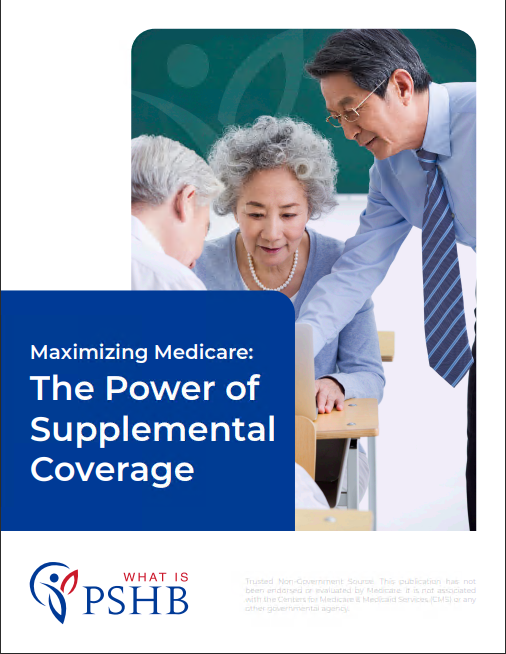Key Takeaways
-
Understand how employer contributions significantly reduce your healthcare premiums.
-
Learn what aspects of your health plan are covered and how it impacts your overall costs.
The Basics of Employer Contributions
When it comes to health insurance, employer contributions play a significant role in reducing the financial burden on employees and retirees. If you’re part of the Postal Service Health Benefits (PSHB) Program, your employer’s contribution covers a substantial portion of your premiums, leaving you to pay the remaining amount.
How Much Does Your Employer Cover?
For USPS employees and retirees, the government typically covers about 70% of the total premium cost for your health plan. This contribution is determined by the average premium rates across all PSHB plans. Your share is the remaining 30%, which can vary depending on the plan you choose and the coverage tier (e.g., Self Only, Self Plus One, or Self and Family).
What Are Premiums?
Premiums are the monthly costs you pay to maintain your health insurance coverage. While your employer’s contributions significantly lower this amount, the exact premium you pay depends on the type of plan you select and your personal or family coverage needs.
What Employer Contributions Cover
Comprehensive Coverage
Your employer’s contributions go toward ensuring that your health plan offers broad coverage. This typically includes:
-
Hospital Stays: Coverage for inpatient services, surgeries, and related care.
-
Medical Services: Outpatient visits, primary care, and specialist consultations.
-
Preventive Care: Screenings, vaccinations, and routine checkups.
-
Prescription Drugs: Access to affordable medications, often with reduced out-of-pocket costs.
Lower Deductibles and Coinsurance
Employer contributions help reduce your financial responsibility for deductibles and coinsurance. For example:
-
Deductibles: The amount you pay before your plan starts covering costs is often significantly lower for in-network services.
-
Coinsurance: Your portion of covered services after meeting the deductible is also minimized, thanks to employer funding.
How Employer Contributions Affect Premiums
Plan Tiers and Contributions
USPS offers three primary coverage tiers: Self Only, Self Plus One, and Self and Family. Each tier has a different premium, with employer contributions scaling to meet the cost of providing coverage for additional family members. Here’s how contributions influence each tier:
-
Self Only: Covers just you. Employer contributions focus solely on individual coverage.
-
Self Plus One: Includes you and one eligible family member. Contributions increase to account for two people.
-
Self and Family: Covers you and multiple family members. Employer contributions are at their highest for this tier.
Balancing Cost and Coverage
While employer contributions are generous, it’s essential to carefully review plan options during Open Season. Choosing a plan with higher premiums often means lower out-of-pocket costs for services, while lower premiums may result in higher deductibles and coinsurance.
The Impact of Open Season Choices
Making Informed Decisions
Each year, Open Season allows USPS employees and retirees to review and change their health plans. Your employer’s contributions remain consistent, but the amount you pay depends on the plan you choose. It’s crucial to:
-
Compare Plans: Assess the total costs, including premiums, deductibles, and out-of-pocket maximums.
-
Evaluate Coverage Needs: Consider your healthcare needs and those of your family members.
-
Review Updates: Check for changes in plan benefits or costs from the previous year.
How Employer Contributions Stay Consistent
Employer contributions are calculated as a percentage of the total premium, not a fixed dollar amount. This means:
-
If premiums rise, your employer’s contributions increase proportionally.
-
You may still see changes in your out-of-pocket costs if the overall premium changes.
Breaking Down Your Costs
What You Pay
Even with employer contributions, you’ll have out-of-pocket expenses. These typically include:
-
Your Share of Premiums: The 30% not covered by employer contributions.
-
Copayments: Flat fees for services like doctor visits or prescriptions.
-
Deductibles: The upfront costs before your plan begins covering expenses.
-
Coinsurance: A percentage of costs for covered services after meeting your deductible.
Reducing Your Out-of-Pocket Expenses
To minimize your costs:
-
Use In-Network Providers: These offer lower rates negotiated by your plan.
-
Take Advantage of Preventive Care: Many services are covered at no cost to you.
-
Coordinate with Medicare: If you’re retired and eligible, combining Medicare with your PSHB plan can reduce your healthcare expenses.
Special Considerations for Retirees
Medicare Integration
If you’re a USPS retiree enrolled in Medicare, employer contributions still apply to your PSHB premiums. Many plans also offer additional benefits for those with Medicare, such as reduced deductibles and lower copayments.
Prescription Drug Coverage
Under the PSHB program, retirees eligible for Medicare Part D are automatically enrolled in an Employer Group Waiver Plan (EGWP). This ensures access to prescription medications at affordable rates, with employer contributions offsetting a portion of the costs.
Cost-Saving Strategies
Retirees can further reduce expenses by:
-
Reviewing Plan Options Annually: Plans and premiums change, so reassess your needs during Open Season.
-
Considering High-Deductible Health Plans (HDHPs): These often pair with Health Savings Accounts (HSAs) for added flexibility.
-
Maximizing Preventive Services: Many are covered at no additional cost.
Why Employer Contributions Matter
Employer contributions are a cornerstone of your health benefits. Without them, the cost of comprehensive coverage would be significantly higher. These contributions ensure that:
-
Healthcare Remains Affordable: By covering a majority of the premium, employer contributions make quality plans accessible.
-
Plans Offer Comprehensive Benefits: Contributions help fund services like hospital care, preventive visits, and prescription drugs.
-
Costs Are Predictable: Knowing your share of the premium allows for better budgeting.
A Valuable Benefit
For USPS employees and retirees, employer contributions represent more than just a financial benefit. They’re a testament to the value placed on your health and well-being. Taking the time to understand how these contributions work empowers you to make informed decisions about your health coverage.
Employer Contributions and Your Healthcare Future
As a USPS worker or retiree, you benefit from one of the most robust employer contribution systems in the country. These contributions make healthcare more affordable, ensuring you can focus on what matters most—your health and your family. By staying informed and making thoughtful choices, you can maximize the value of this essential benefit.












